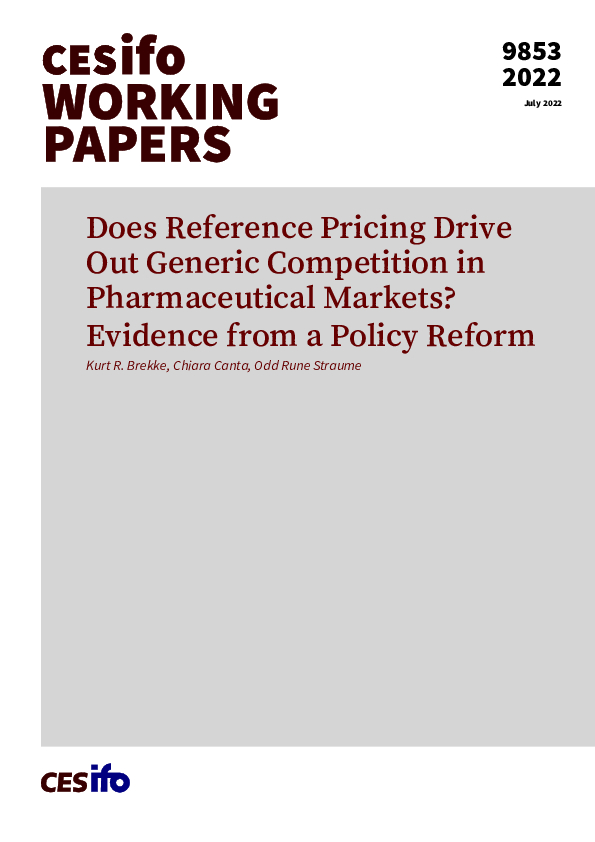Does Reference Pricing Drive Out Generic Competition in Pharmaceutical Markets? Evidence from a Policy Reform
CESifo, Munich, 2022
CESifo Working Paper No. 9853

Policy makers use reference pricing to curb pharmaceutical expenditures by reducing coverage of expensive branded drugs. In a theoretical analysis we show that the net effect of reference pricing is generally ambiguous when accounting for entry by generic producers. Reference pricing shifts demand towards generics but also induces the branded producer to become more agressive, which triggers price competition and potentially deters entry by generic producers. To investigate the counter- vailing effects, we exploit a policy reform in Norway with a gradual implementation of reference pricing across substances over time. Using a difference-in-differences approach, we find that treated substances have a sharper decline in both branded and generic drug prices and branded market shares. Despite fiercer price competition, the number of generic producers and products increases after exposure to reference pricing, resulting in a reduction of 30 percent in pharmaceutical expenditures. Thus, we find no evidence for a countervailing entry deterring effect of reference pricing.
Industrial Organisation